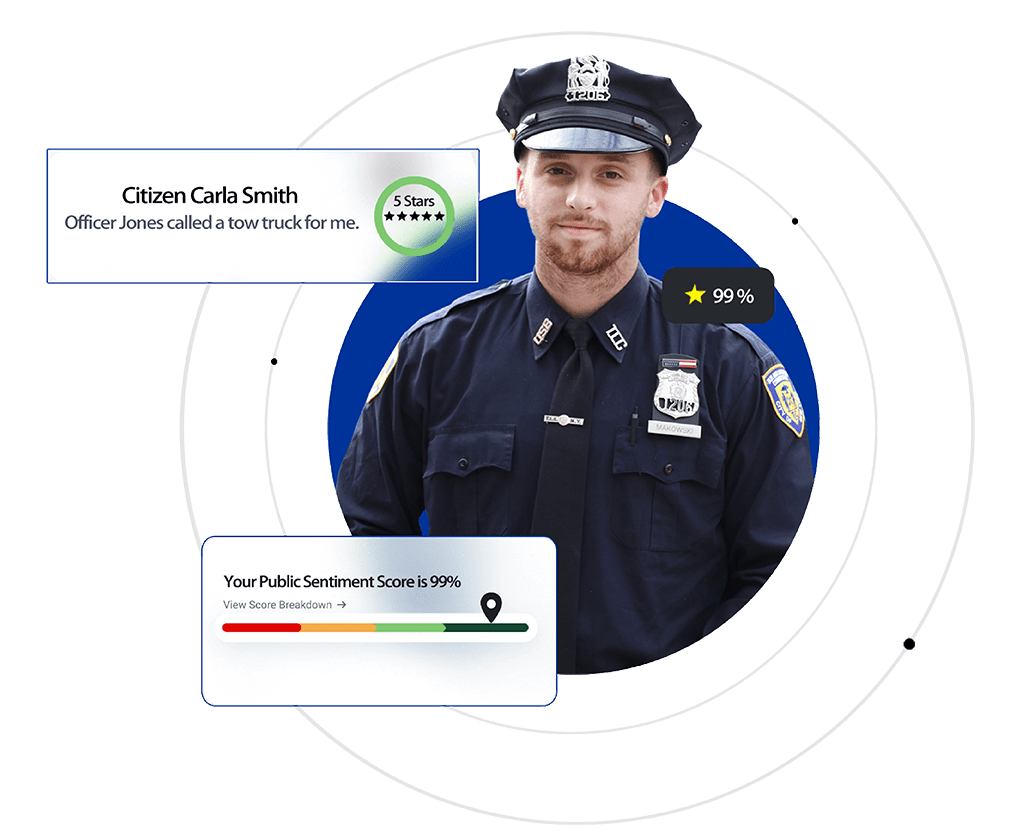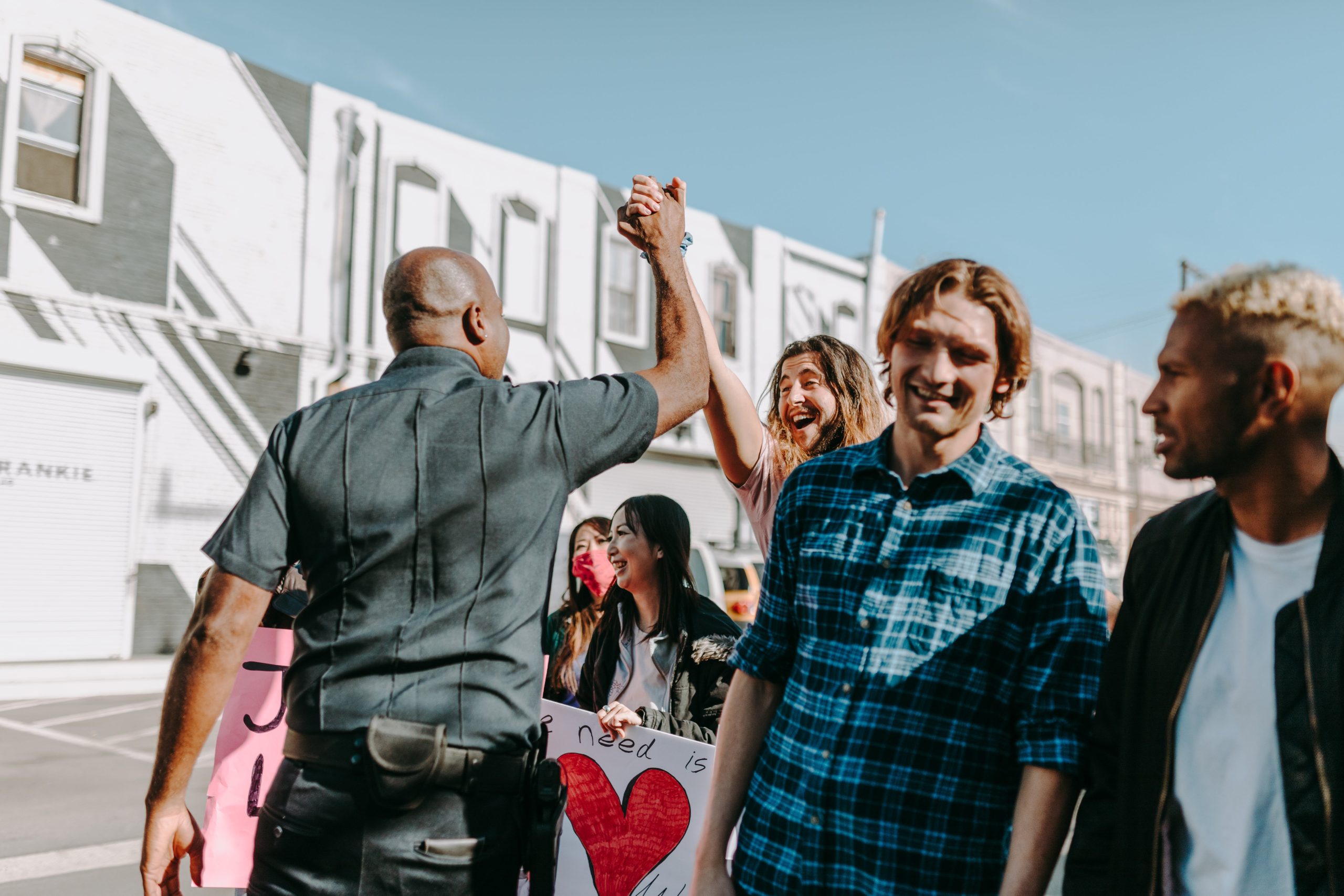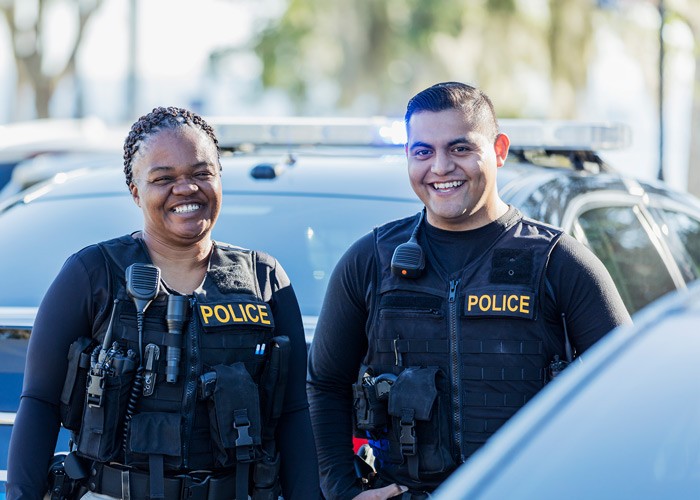Public trust in law enforcement has declined sharply in recent years. A 2021 Gallup poll showed only 45% of Americans have confidence in the police – the lowest rate in 30 years. This crisis of confidence stemmed from incidents of excessive force and racial profiling that triggered nationwide protests for policing reform.
Rebuildng community trust stands as one of the most urgent challenges facing law enforcement in 2024. And fostering open communication with the public through surveys is a vital part of the trust-building process. However, experts argue generic survey tools fail to provide the customized capabilities police departments need.
Purpose-built solutions like Officer Survey offer an advanced alternative optimized for the unique requirements of community engagement in the policing context. This article will compare Officer Survey and SurveyMonkey for police use cases and demonstrate why generic tools fall short for critical law enforcement needs.
The Limitations of One-Size-Fits-All Surveying
Tools like SurveyMonkey provide user-friendly interfaces and broad applications for surveying consumers, employees, students, event attendees, and the general public. But their generalized functionality results in key limitations for community-police relations surveying, including:
Lack of Critical Contextual Data
- No integration with police data systems to automatically link survey results to related incidents, calls for service, complaint reports, geographic areas, demographics, and other key contextual data points.
Inability to Target Key Groups
- Very limited capacity to distribute tailored surveys to specific communities, neighborhoods, victim groups, or residents involved in certain interaction types. General population surveys lack granular insights.
No Individual Officer Performance Tracking
- No linkage of survey results to individual officer IDs, preventing detailed analysis of strengths/weaknesses in community interactions down to each police officer. Critical gap in understanding where focused training/coaching is needed.
Generic Surveying Capabilities
- Templates, questions, skip logic, and answer options are broadly designed, not optimized to capture police-community engagement insights and public safety perspectives.
Analytics Lack Policing Context
- Analysis and reporting lack built-in benchmarking, temporal analysis, demographic cuts, trust-indicator tracking, and other analytics required to glean actionable insights related to policing.
While these “one-size-fits-all” tools may work for general consumer surveys or market research, police departments have unique needs that demand purpose-built solutions.
The Case for Customized Police Surveying
Expert consensus highlights that advanced, specially-designed surveying capabilities are essential for law enforcement agencies to:
-
- Solicit feedback tailored to police-community interaction
- Identify areas for targeted improvements
- Track community perceptions over time
- Facilitate two-way communication with residents
- Monitor department and individual officer performance
- Build public trust through active engagement
Specialized software equips departments to capture high-quality insights on public safety perspectives, while integrating tightly with internal police data systems for in-depth analysis.
Introducing Officer Survey – A Platform Built for Policing
Officer Survey delivers an end-to-end surveying and engagement solution designed exclusively for the needs of police departments. Its capabilities are customized to empower law enforcement leaders with actionable insights to strengthen community relations and internal department cohesion.
Post-Interaction Surveys
The cornerstone of Officer Survey is enabling residents to provide direct feedback on their specific interactions with police officers who responded to calls for service. The software ties these post-interaction surveys directly to the officer’s ID number and policing data related to the incident.
This unlocks invaluable insights into individual officers’ strengths and weaknesses engaging the community, guiding tailored coaching and skills development in areas like de-escalation, cultural awareness, complaint avoidance, and more.
Targeted Community Surveys
Officer Survey allows departments to distribute online surveys to targeted local areas or demographics to identify concerns, perceptions, and satisfaction levels regarding public safety and trust in police. Micro-surveying key communities and neighborhoods provides granular insights compared to vague general population surveys.
The geographical tagging integrates with other police analytics tools to uncover correlations, trends, and areas needing focus. For example, surveys could reveal a particular division has seen declining trust related to responsiveness.
Internal Surveys
Confidential internal surveys are essential for police leadership to identify gaps in training, assess policies, improve department culture, and promote organizational health.
Officer Survey enables in-depth surveys across all employees or segments on topics like leadership, morale, readiness, equipment, use of force policies, and reform priorities. Results inform data-backed decisions on improving departmental performance.
Police-Focused Analytics
Advanced analytics contextualize Officer Survey results by automatically cross-referencing incident data, calls for service, complaints, demographics, trust metrics, and temporal analysis. Custom benchmarks compare community sentiment across areas and interaction types.
These law enforcement-specific analytics bring survey data to life, transforming it into actionable insights leaders can use to pinpoint and address priority issues. Ongoing trend analysis also tracks performance over time.
Tailored Question Design
Expert-designed survey templates, question banks, and answer scales are all tailored specifically to police-community relations, public safety issues, and organizational health topics. This specialization captures nuanced insights compared to bland generic survey questions.
Two-Way Communication Channel
Unlike static surveys, Officer Survey opens a two-way communication channel. Residents engaging in surveys get notified when department policy changes or training programs are implemented in response to feedback.
Police demonstrate responsiveness and accountability, further building community trust. Ongoing constructive dialogue, not just periodic surveys, is key for meaningful community engagement.
Driving Real-World Impact
These law enforcement-specific capabilities make Officer Survey unmatched for enabling police departments to strengthen community trust and continuously improve services.
For example, Bridgeport CT PD began using Officer Survey in 2021. Within a year, they saw a 97% overall community satisfaction rate.
The Appleton, Wisconsin police department began using Officer Survey in 2021 as a new channel for community feedback. The platform allowed residents to provide direct input on their police interactions and overall sentiment toward the department.
In its first year, the initiative was met with an immense response from the Appleton community. Over 1,500 local residents completed digital surveys sharing their perspectives. This wealth of insights gave police leadership a detailed view into community priorities and concerns.
Equipped with robust data from the surveys, the Appleton Police Department implemented several operational changes in 2022 directly responsive to community input. For example, patrols were expanded in neighborhoods reporting slow response times. Additional de-escalation and bias training was instituted in light of feedback around interaction professionalism. Outreach events were coordinated in communities indicating lower trust and satisfaction.
This case demonstrates the value of establishing open, ongoing channels for community feedback through purpose-built tools like Officer Survey. The platform provided Appleton PD with rich insights to guide targeted improvements. Just as importantly, responding directly to resident concerns strengthened two-way communication, transparency, and trust between the department and community.
Beyond engaging the community, Officer Survey also empowers police departments to survey their own personnel. These internal surveys provide invaluable insights into improving departmental culture, policies, and operations.
For example, a mid-sized police department in the Midwest region utilized the platform’s confidential internal surveying capabilities in 2021. They distributed organization-wide surveys to officers on topics like training programs, scheduling satisfaction, time-off policies, leadership, and general morale.
The survey resulted in constructive feedback from all segments of the department, from patrol officers to command staff. By analyzing the aggregated data, leadership pinpointed issues troubling the rank-and-file. Officers requested more scenario and de-escalation training. They also sought fairer scheduling practices and time-off approval processes.
Informed by these survey findings, the department instituted positive changes in 2022. Training was expanded to address gaps identified by officers. Scheduling and leave policies were amended to be more equitable and officer-friendly.
As a result of implementing reforms responsive to internal survey feedback, department morale saw a noticeable boost. Officers felt heard by leadership and that their perspectives shaped real change.
This case highlights the value of Officer Survey’s internal polling capabilities for police departments seeking to improve their organizational health and culture. Direct officer feedback provides insights to inform policies that uplift department morale, effectiveness, and readiness to serve the public.
These success stories demonstrate the power of purpose-built surveying and analytics to generate insights that drive meaningful improvements in policing and public safety.
Looking Ahead: Specialized Software for Modern Policing
As law enforcement evolves to meet rising public demands for transparency, accountability, and community-centric service, advanced technologies will prove essential. Off-the-shelf generic tools are insufficient for the intricacies of public safety communication, data analysis, and organizational intelligence.
Officer Survey represents the future of technology infrastructure to empower police leaders with real-time insights that tangibly strengthen community relations, improve service delivery, and build an open and trusting communication channel.
Purpose-built software designed exclusively for the complex landscape of modern policing will prove indispensable as law enforcement moves forward in this new era of reform. The time has come to leverage these 21st century solutions to their full potential and usher in a new generation of policing built on engagement, understanding, and trust.
When evaluating survey solutions, police departments should look beyond upfront cost differences and focus on long-term value and results. The price tag of basic tools like SurveyMonkey may seem attractive initially. However, purpose-built platforms like Officer Survey often deliver superior, policing-specific capabilities that translate to tangible improvements in community relations, public safety, and departmental excellence over time. While cost comparisons have their place, the efficacy of the software in generating trust-building insights and driving meaningful change should be the overriding priority. The long view shows customized tools designed for law enforcement needs deliver ROI that far outweighs their higher cost through sustained advancements in policing outcomes. Click here to get started today.






